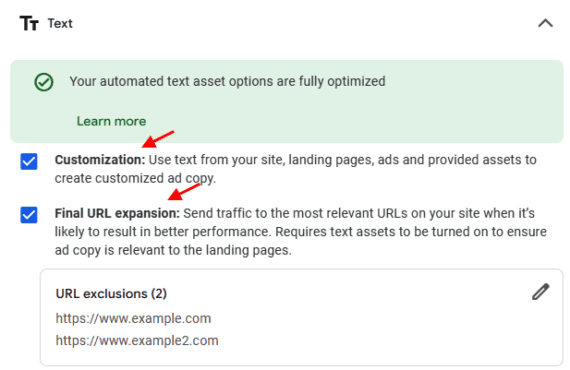Google Max’s performance campaigns respond to ads to all Google Signni channels. The search giant automatically determines the subtitles, descriptions and images of advertising across, say, search, display and youtube to get rid of the best results.
Yet PMAX campaigns lack transparency and reduce possibilities.
The encouraging message is that Google reports advertisers and has introduced the PMAX report and flexibility updates last year. These include messages on conversions and conversions of the search category and conversion category and conversion of search motif, as well as the ability to exclude your devices where your ads may appear.
Recently, Google has been provided with new PMAX optimization features. I will deal with this post.
Canal performance
At maximum campaign level, advertisers can now monitor channels to drive traffic and conversions. In the example, the operation from Google Discover Discover represents 5.36% of total expenditure and one conversion.
Maximum advertisers can now see at the campaign level that is aimed at operation and conversions. Click the image to enlarge.
Performance Max Advertising here can appear here Google Channels:
- Discovers
- Display
- Gmail
- Maps
- Search
- YouTube
Advertisers cannot exclude specific channels, but the new visibility is useful and can determine the overall life of Pmax. Advertisers can Excluded non -verging ads and keywords that further assess PMAX is the right option.
Final extension of the URL address
By default, the new Performance MAX campaign will turn on the final URL extension. This means that Google can send search engines to another input page for better transfers. Extension of the final URL can be useful, but it is important to find out which pages are being converted. The option on the “Asset” tab provides the final assets of the URL extension.
Advertisers can irrelevant URLs in the “Asset Optimization” in campaign files. Click “Customization” to activate the “final extension of the URL”.

Advertisers can irrelevant URLs in the “Asset Optimization” in campaign files. Click the image to enlarge.
Optimization of assets
Speaking of asset optimization, advertisers can see asset for many Performance Max data components. For example, a heading with Google-CreeTeted can convert twice the speed of the advertiser version. Advertisers can suspend automatically created assets, just like suspending keywords.
Advertisers can deactivate automated account assets, but not for campaigns. Turn off the option, for example, if you don’t want Silelinks Google to display. Keep in mind that switching off the automated asset has an impact on the Entirement account.
Negative keywords
Performance Max campaigns have always allowed negative keywords. However, the settings were cumbersome and required EITH poimprementation by a Google representative or creating a negative list of keywords at the account level.
Now adding negative keywords is easy. Discovery Keywords are also easy, because search questions are available as a separate option on the “Insights and Reports” tab to display data and select the conditions you want to exclude.
Look
Google introduced search topics in 2023 to help lead its AI. The topics work similarly to keywords. For example, a seller selling winter jackets could provide search topics:
- “Winter jackets,”
- “Men’s winter jackets,”
- “Women’s winter jackets,”
The searchors may not enter these keywords to display ads. Instead, the ads show whether the content of the advertiser’s website or the History of Question Finders indicates the elevator. Along with the audience signals helps Google search topics know the search engine profile.
Google now allows up to 50 topics to search for a group of assets, which is an increase of 10.

